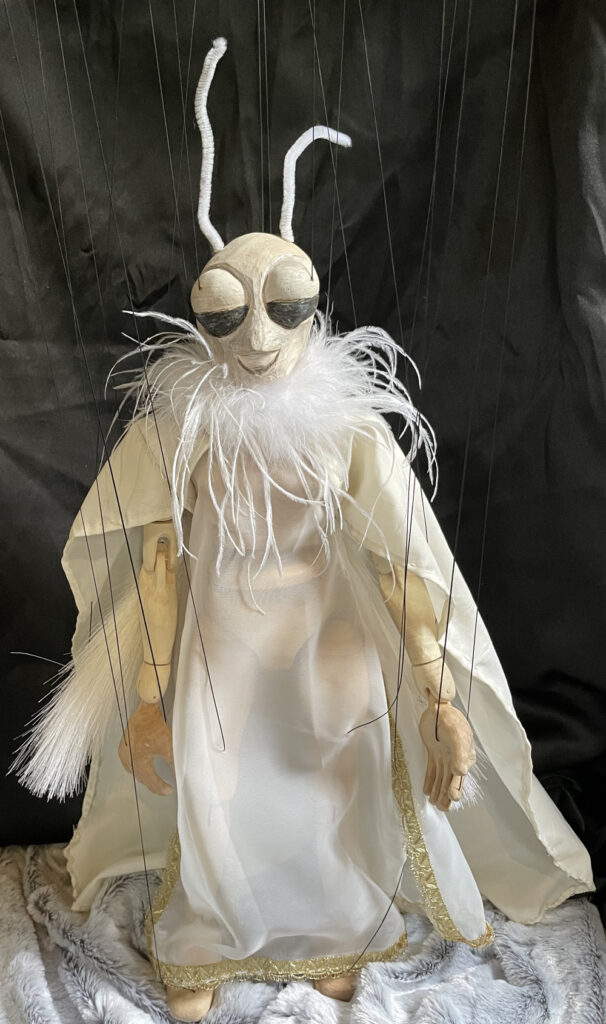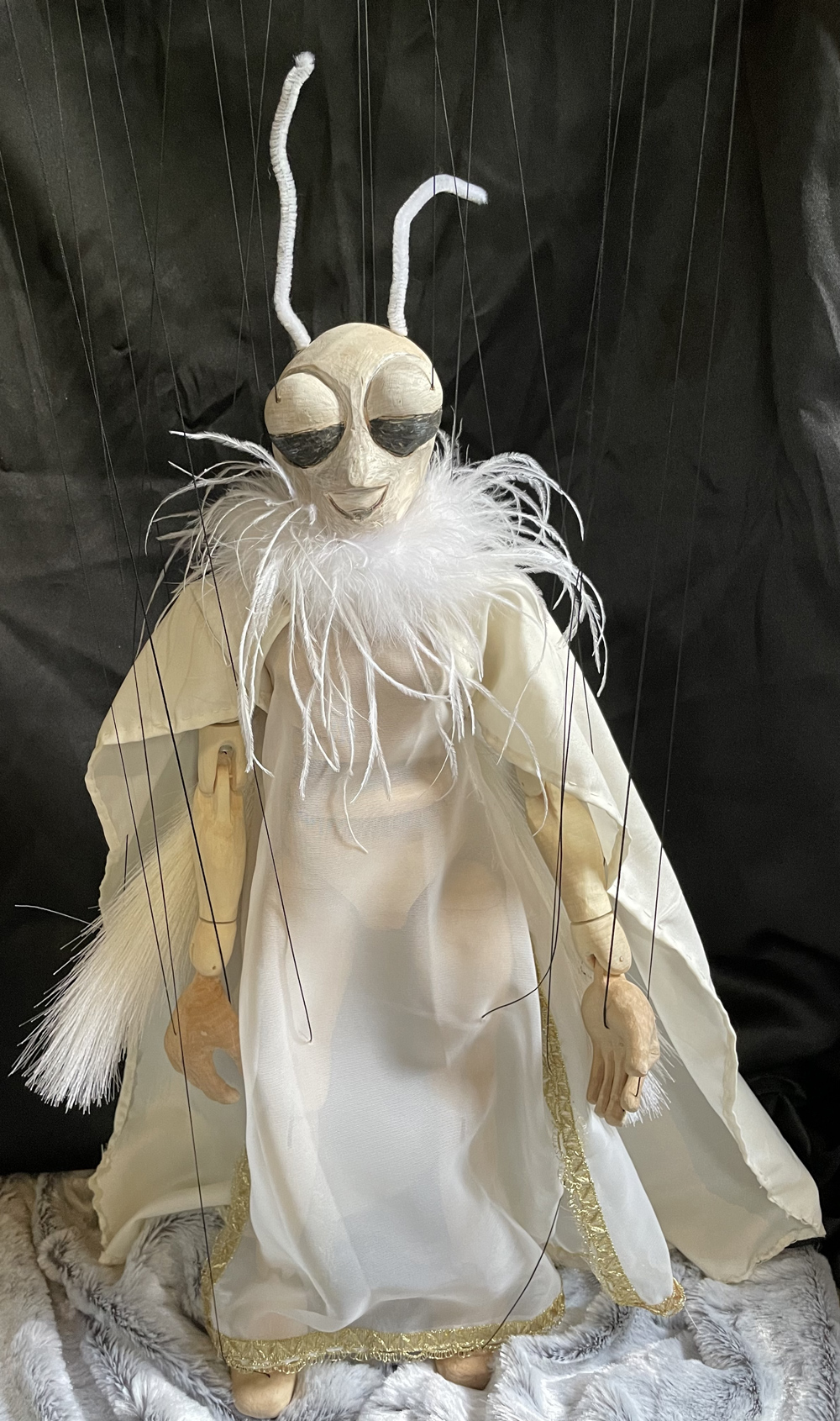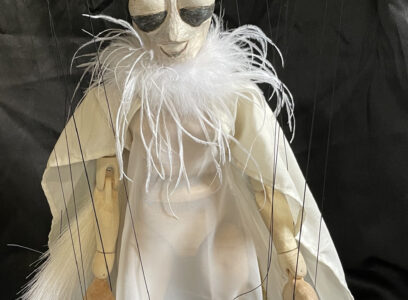Maïté Agopian

Phyllocnistis populiella (aspen serpentine leaf miner)
With few broadleaf tree species in our boreal forest, I was intrigued to see so many of these young aspen leaves quickly eaten away, leaving fascinating individual patterns. When I heard Dr. Patricia Doak’s vivid lecture about the aspen leaf miners cycle, I got hooked and inspired by such a dramatic story taking place in a miniature world, with a large-scale visual impact we witness each summer. I consulted her with follow up questions before letting my imagination find its own way to tell this story.
The tiny white aspen serpentine leaf miner moth (Phyllocnistis populiella) survives winter hidden at the base of white spruce trees, under the needles, and comes out in the spring to mate and lay eggs on aspen leaves. The larvae then mine through the leaves to feed, eventually transforming aspen overall color into a silvery hue. What struck me was the parallel between the moth’s natural pale gray color and the result of their larvae mining work, as if they wanted to transform the tree color scheme to their own image. Other aspects were how two meeting larvae fight to death, the looser being eating by the winner, as well as their ineptitude to move past the top – or bottom – layer of the leaf (epidermis), ensuring that larvae living on opposite sides of the same leaf never cross paths. As a character, I saw a beautiful, tiny fragile moth having extensive destructive power by perpetuating the cycle. But for whom is she the most destructive? The trees, who are not killed by it, or really just our own visual comfort?
To tell this life-cycle story, I made 1) a wooden representation of a female aspen serpentine moth string puppet able to dance, spread her wings and fly; 2) a series of painted drawings that I used with pictures and paper puppets to project a short mixed media video clip; and, 3) a short poem-like text that tells her own story and strengthens the link between the puppet and the projection.
In a live performance, the moth, in front of a white screen, wakes up, and starts to dance as her story is projected on the screen. At the end, she will spread her wings, take a bow and leave. Live music and spoken text are supporting this short piece.
Live performance (Sept. 3, 2023), as part of “In a Time of Change: Boreal Forest Stories” at Arctic Fest, Alaska Centennial Center for the Arts, Fairbanks, Alaska.
Full text for video below (PDF)
Shadow puppetry element
I would like to thank Pat Doak for her inspiring talk and her role as a consultant at the beginning of the process, the Rasmuson Foundation for trusting me and giving me the opportunity to develop my work, as well as Bernd Ogrodnick, master puppeteer, for teaching me how to carve all kinds of puppets!
Maïté Agopian
Living in a boreal environment defined by wood, light and darkness has had a strong impact on Maïté Agopian’s puppetry choices. While working with a broad spectrum of puppet style and medium, she has specialized in shadow theater and wooden puppets through multiple classes and workshops in the USA and Europe. Thanks to an Individual Artist Award from the Rasmuson Foundation, she was able to focus this year on building her carving skills and developing new sets of work for adults and children, all inspired by the ITOC lecture series.
Website: www.chackpuppetry.org


